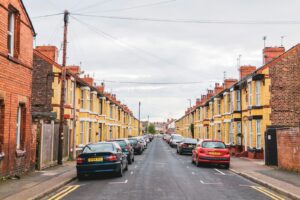Building aspiration from the bottom-up
There has been quite a lot of talk recently about a general air of social pessimism, or what some call the ‘aspiration gap’, and a reflection that we are not using our power and resources effectively. In his 2012 chief executive’s Annual Lecture, Matthew Taylor of the RSA explores this further. At its core, this means people don’t believe they can make a difference. So how do we tackle this in a regeneration context?
I have been reading a couple of really interesting Joseph Rowntree Foundation reports from Prof David Adamson recently, available here and here. He has explored this subject and why it is so important to tackle cultural aspiration at the same time as more obvious service improvements. Here is a summary:
Creating aspiration ‘can be achieved by providing residents of all ages with social experiences illustrating the alternatives that might not be visible in the local community. Mechanisms can include sports, arts and cultural activities that promote a greater sense of personal agency and self management. Activities providing and celebrating personal achievements are essential to raising personal and communal levels of confidence. Events promoting communal achievements encourage greater involvement in future activities’.
I believe the Big Local approach is already doing some of this and is a part of the answer to creating higher levels of aspiration. In my travels around the country visiting Big Local reps, I see residents getting involved in their community for the first time, and taking the lead in organising activities to discuss how to improve the places where they live.
The Big Local reps are important in promoting a ‘can do’ attitude and encouraging people to be ambitious. Unltd is finding social entrepreneurs and supporting them to make their ideas a reality. NANM is running a series of study visits so people can see existing high quality projects. Capacity Global is highlighting how environmental projects such as food growing are possible. Local Trust is providing small pots of funding in a timely and flexible way and sending out positive messages. As a result of all this activity, I am already hearing lots of positive stories about how Big Local is changing lives. Many, for example, are talking about it ‘helping them to get out of bed in the morning’ as seen in this film produced by the residents of Warwick Estate in Knottingley.
However, I believe we need to go further because, of course, many of these activities have been associated with previous regeneration schemes. We need to be smarter about why and how we build aspiration, making sure that we see this as a goal in its own right. If a community volunteer develops their confidence and skills in running Big Local activities, how do they link to more formal opportunities? Again, to quote David Adamson:
‘Currently it is largely a matter of luck that people who engage with regeneration within their community find a route to the external world of improved health, better educational attainment and, most importantly, employment. These routes should be designed, structured and routine rather than accidental.’
Recently, NAVCA and Locality have called for more money for deprived areas, and there is an important article promoting neighbourhood action. Instinctively, we know these to be right things but until we can convincingly show how a community-led approach can tackle core problems at scale, I am not sure whether the powers that be will be forthcoming with the resources.















